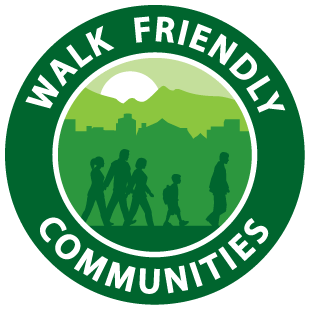Walk Friendly Communities is a national recognition program developed to encourage towns and cities across the U.S. to establish or recommit to a high priority for supporting safer walking environments. The WFC program recognizes communities that are working to improve a wide range of conditions related to walking, including safety, mobility, access, and comfort.
Funding
Walk Friendly Communities is supported and operated by the UNC Highway Safety Research Center. The program was previously sponsored by FedEx. We are supported by the Pedestrian and Bicycle Information Center (PBIC), a national clearinghouse on bicycling and walking funded by the US Department of Transportation.
Contact
Dan Gelinne
gelinne@hsrc.unc.edu
(919) 962-8703
Program Development
The WFC assessment tool was developed through the review of relevant programs, guides, and research, collaboration among a diverse group of pedestrian experts, and pilot testing with communities. The development process included the following steps:
- A review of relevant programs, tools, and research was performed to determine the best tools and resources for evaluating the walkability of a community. This review summarized existing community studies, scorings, programs, and community approaches that provide goals and recognition to cities emphasizing walkable or bikeable communities.
- Two advisory panels were formed to assist in program development. The first panel included ten members of the Association of Pedestrian and Bicycle Professionals. The other panel formed was a national review group that included members representing many different areas of expertise.
- A draft community assessment tool was created to comprehensively evaluate a community’s walkability. This rating tool is covers the 5 E’s (Engineering, Education, Encouragement, Enforcement, & Evaluation) and other elements (including planning) that are needed to help communities set clear goals and plans for achieving those goals. The draft tool provided the foundation for the existing assessment tool.
- The assessment tool was then pilot tested in three communities of varying demographics. These communities include a small town (Cedarburg, WI), a small town with a college and commuter population (Davidson, NC), and a large city (Orlando, FL). The contributions of these communities helped shape the program. Through their suggestions and feedback, the tool was revised to capture information more accurately and easily.
